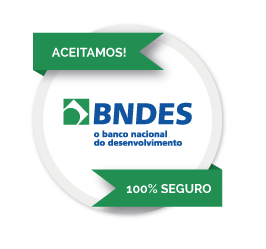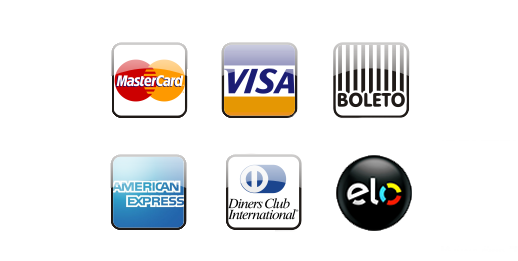You would essentially need to purchase 225 individual stocks, which would not only be expensive, but highly complicated. As such, you would instead by best utilizing either an index fund or exchange traded fund (ETF). Launched back in 1950, the Tokyo Stock Exchange is the largest stock exchange in Japan, and the fourth largest in the world by market capitalization.
The index hit an all-time high in December 1989 at the height of the Japanese asset price bubble, reaching a value of almost 39,000, but as of February 2020 has never regained those heights. Indeed, since 2000 the index has experienced double digit year-on-year losses seven times, compared to just two times for the Dow Jones. The underlines not only the difference in long-term performance of the Nikkei 225 and other global indices but also the level of stock volatility that the Japanese index can exhibit. The Nikkei 225 is the Japanese stock market index that features the most prominent businesses in the Japanese economy. In this piece, we explore what the Nikkei 225 represents, its history, the companies that constitute the index, and how to approach trading it. The composition of the Nikkei 225 and the weighting of the shares included in it are reviewed once annually and adjusted when necessary.
Due to the size of the Japanese economy and its position on the continent, the Nikkei 225 index can be a useful indicator of market sentiments in the region of East Asia. The Nikkei 225 Stock Average is Japan’s primary stock index and a barometer of the Japanese economy. It gauges the behavior of top Japanese companies, covering a broad swath of industries. Broadly considered Japan’s equivalent to the Dow Jones Industrial Average, it includes the top 225 blue-chip companies listed on the Tokyo Stock Exchange.
You should consider whether you understand how this product works, and whether you can afford to take the high risk of losing your money. If you seek broad exposure to the Japanese stock market through investments whose underlying assets track the Nikkei 225, ETFs may be the way to go. One option is the MAXIS Nikkei 225 Index ETF, which offers exposure to the Japanese stock market with a U.S.-listed, dollar-denominated exchange-traded fund. The Nikkei Stock Average, the Nikkei 225 is used around the globe as the premier index of Japanese stocks. More than 70 years have passed since the commencement of its calculation, which represents the history of Japanese economy after the World War II. The Nikkei 225 is a price-weighted equity index, which consists of 225 stocks in the Prime Market of the Tokyo Stock Exchange.
Stay on top of upcoming market-moving events with our customisable economic calendar. Discover the range of markets and learn how they work – with IG Academy’s online course. The Japanese stock index used to be called the Nikkei Dow Jones Stock Average, from 1975 to 1985. It was later changed, named after the Nihon Keizai Shimbun or Japan Economic Newspaper, which is commonly known as Nikkei.
Like mutual funds, ETFs offer diversification through a single investment. Like the Dow Jones Industrial Average, the Nikkei 225 Stock Average is a price-weighted equity index. Ranking of companies is determined by stock price, which differs from other major indexes where market capitalization is used in calculations. The shares included in it are weighted according to price; the index level represents the average of the shares included in it. Dividend payments and stock market turnover are not considered when calculating the index. Make sure you follow the live Nikkei 225 price with our interactive price chart, and keep up to date with the latest Nikkei 225 news and analysis.
The United Kingdom, France, Germany, Switzerland, Italy, and Singapore also offer ETFs that track the Nikkei 225, some of which are cross-listed on the Tokyo Stock Exchange. They include Blackrock Japan’s iShares Nikkei 225 ETF, Nomura Asset Management’s Nikkei 225 Exchange Traded Fund (NTETF), and Daiwa Asset Management’s Daiwa ETF Nikkei 225. Calculated since September of 1950 (retroactively to May of 1949), it is Asia’s oldest index and also commonly referred to as the Nikkei 225, Nikkei Index, and the Nikkei. The index is reviewed annually in September, and any changes are implemented in October. MoneyCheck is a fast-growing online publication launched in 2018 with the aim of covering personal finance and investment news. So now that you know how the Nikkei 225 has performed over the past 30 years, in the next section of our guide we are going to show you how you can make an investment.
However, this doesn’t necessarily make the Nikkei 225 index an unworthy investment. While the above figures do make nervous reading, it is important to remember that investing is all about timing. For those not familiar with the Yen, that amounts to GBP£270 billion or US$357 billion.
The only way to trade on the Nikkei 225 price directly with us is through our Japan 225 index. You’ll use CFDs to take a position, and your profit or loss will depend on the outcome of your prediction. Most European traders seek to diversify their portfolio, and the Nikkei 225 tends to be the preferred outlet because the Japanese economy is one of the biggest across the globe. Since the Nikkei index follows the Japanese economy closely, you can monitor the economic and political climate of the country to predict how the index will move.
We want to clarify that IG International does not have an official Line account at this time. Therefore, any accounts claiming to represent IG International on Line are unauthorized and should be considered as fake. 70% of retail client accounts lose money when trading CFDs, with this investment provider. Please ensure you understand how this product works and whether you can afford to take the high risk of losing money. The risks of loss from investing in CFDs can be substantial and the value of your investments may fluctuate. CFDs are complex instruments and come with a high risk of losing money rapidly due to leverage.
The tech industry is the largest sector weighted on the Nikkei index, followed by other industries involved in consumer products, transportation and utilities. The history of the Nikkei 225 begins in 1950, but it was retroactively calculated to May https://www.tradebot.online/ the previous year. Originally, the index was administered by the Tokyo Stock Exchange but was taken on by the Nikkei financial newspaper in 1970. However, you can gain exposure to this index through buying shares of an ETF that tracks the Nikkei.
When you purchase an ETF, the process works in a very similar way to that of a conventional equity. The reason for this is that the market value of the Nikkei 225 ETF will rise and fall throughout the day. Moreover, you can then sell your ETF on the open marketplace, just like you would with a company stock. One of the leading index funds in this respect is the Daiwa Japan Nikkei 225 Index Fund.
However, and perhaps more importantly, the vast majority of the Japanese stock marketplace is dominate by the companies sat at the very top of the market capitalization rankings. Nikkei Inc. has developed and calculated its own indexes from various perspective, looking at changes in society and markets. The Nikkei average has deviated sharply from the textbook model of stock averages, which grow at a steady exponential rate. The Nikkei is price-weighted, which means the index is an average of the share prices of all the companies listed. Because each company’s stock is weighted by its price per share, the Nikkei tends to be influenced by high-priced stocks such as technology stocks.
Much like in the case of other major stock exchanges, the Tokyo Stock Exchange bridges the gap between corporations and investors. Through the use of real-time electronic tracking, the exchange details the current trading prices available on each of the companies it lists. At the height of the bubble, the TSE accounted for 60% of global stock market capitalization. The Nikkei 225 is a major stock market index that lists the 225 largest companies by price weighting on the Tokyo Stock Exchange. Buying and managing each individual stock in the Nikkei 225 is costly and impractical, with substantial tax implications. Individual investors can gain exposure through exchange-traded funds (ETFs) whose underlying assets correlate to the Nikkei 225.
In fact, at the time of writing in March 2019, the Nikkei 225 index is positioned at just over 21,500 points. Moreover, the highest record the Nikkei 225 index has been able to set since its 1989 heights was the 24,270 points it hit in December 2018. Before the economic downturn came to fruition, in 1989 the Nikkei peaked at 38,916 points.
Empresa formada por pessoas que acreditam na inovação tecnológica a serviço da medicina para o desenvolvimento de soluções que atuam diretamente na melhoria do atendimento na área da médica hospitalar.

Oferecer produtos e serviços de qualidade, aprimorando a vida dos nossos clientes e da sociedade ao seu redor, deixando assim, uma grande herança à futuras gerações.

Plantão:
Aos Sábados e Domingos pelo WhatsApp![]()
Melhor curso de QA no Brasil.